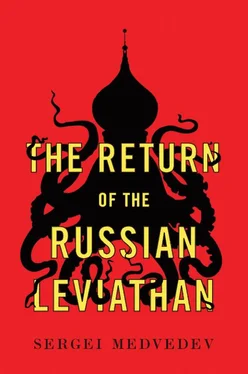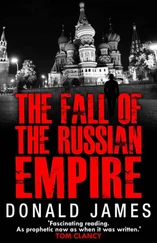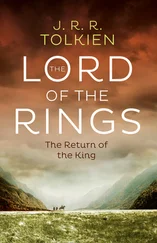I went off to have supper in the Chinese Quarter, where the Great Eastern restaurant serves (as they assure you) the best dim-sum on the whole US West Coast, and where Barack Obama once ordered takeaway dumplings. San Francisco’s Chinatown is the most famous in America, as well as the oldest. Chinese migrants started arriving in the middle of the nineteenth century in their tens of thousands, men who came to work on construction of the Pacific and transcontinental railroads. The history of Chinatown is full of tales of xenophobia (such as the Chinese Exclusion Act of 1882), fires and ethnic crime; but today the Chinese make up 20 per cent of the population of San Francisco and are one of the more successful communities. The Chinese Quarter has become one of the symbols of the city.
Silicon Valley didn’t spring up just by chance among the rolling hills and serene gardens of Palo Alto and San Jose. At its heart lay the freedom-loving spirit of California, ‘the promised land’, which attracted the adventurers in their covered wagons. Here was to be found the entrepreneurial excitement of the frontier, which resonated to the sound of the wheels of stagecoaches and the crack of the Winchester rifle; but there was also an unimaginable mix of races and cultures: Hispanics, Anglo-Saxons, Scandinavians, Chinese, Japanese, Russian Old Believers, [7] The Synod of the Eastern Orthodox Church of 1666–7 introduced reforms that were then adopted by the Russian Church. Those who refused to accept the changes became known as the ‘Old Believers’ and were persecuted. Some fled abroad, others set up communities in Russia’s vast wastelands, some of which were discovered only in Soviet times.
all seeking happiness in this golden, oil-rich and now digital El Dorado. California meant not only gold fever, but also an unprecedented freedom: the hubbub of the saloons, the can-can cabaret, the dubious entertainments in the alleyways of the port of San Francisco. In the rebellious 1960s, the hippy revolution developed in the warm Californian climate – as Scott McKenzie sang in the unofficial hymn of the counterculture of the 1960s: ‘If you’re going to San Francisco, be sure to wear some flowers in your hair.’ It was there that the first gay revolution took place, linked with the name of Harvey Milk; [8] Harvey Milk was an American politician and the first openly gay elected official in the history of California, when he served on the San Francisco Board of Supervisors in 1977–8.
and there, too, in San Francisco, where the AIDS epidemic broke out in 1981.
Without all of this, Silicon Valley would never have come into being (and also, incidentally, without the huge government investments that the USA made into new technology after the shock caused by Russia’s Sputnik programme between 1957 and 1961, and without the Stanford Industrial Park). Its location is on the reckless west coast of the USA and not on the stiff and starchy east coast, even though it would appear that the country’s best intellectual resources used to be in the east, from Yale and Harvard to the Massachusetts Institute of Technology (MIT). This is not because hippies, Chinese and gays are especially gifted, nor that unique creative enlightenment comes thanks to the influence of LSD. The point is that in post-industrial society an atmosphere that is multinational and tolerant and allows for sexual freedom encourages the flowering of entrepreneurism, innovation and creativity. A person who is prepared to accept another with all their differences is also prepared to accept new business ideas or finance a risky start-up. And give ten thousand dollars credit for someone to construct a computer in a garage – from where the Apple empire grew.
After all, it is all about complexity management. Post-industrial societies have a high density of horizontal connections, and demonstrate a wide variety of identities, and religious, ethnic and sexual practices, each of which relies not on domination but on equality. The ability to understand and accept this complexity (also through the rituals of political correctness and tolerance, which they love to laugh at in Russia) is the key to managing and modelling complexity. In today’s world, all the major centres of creating value and meaning – New York, London, Berlin, Paris, Barcelona – are marked out by their multiculturalism (another favourite target for Russian critics of the West), broadmindedness, and acceptance of variety in ethnicity, race, religion and sexual orientation. And it is no coincidence that a number of the greatest global cities today have had an openly gay mayor: Bertrand Delanoë in Paris, Klaus Wowereit in Berlin, Ole von Beust in Hamburg, Glen Murray in Winnipeg… [9] Bertrand Delanoë was Mayor of Paris 2001–14; Klaus Wowereit was Mayor of Berlin 2011–14; Ole von Beust was Mayor of Hamburg 2001–10; Glen Murray was Mayor of Winnipeg 1998–2004.
Moreover, the author of the fashionable concept of ‘the creative class’, Richard Florida, suggested creating a ‘Gay Index’ as a way of measuring tolerance. The level of openness to sexual minorities is an indicator of how low the barriers are for the development of human capital. According to Florida’s research, centres of the innovation economy are exceedingly popular places for the gay community to live. And the Russian political scientist, Andrei Shcherbak, carried out similar research in fifty-five countries between 1996 and 2008, in the course of which he studied the influence of tolerance on economic and technological modernization, measuring it in relation to gender equality, sexual minorities and xenophobia. In putting together his modernization index, Shcherbak took into account the role of hi-tech goods produced for export, the percentage of GDP spent on research and development, the number of academic articles on science and technology, the number of patent applications, the size of seed capital investment as a percentage of GDP and the level of foreign investment as a percentage of GDP. With all of this, his results correlated with the index of acceptance of gender equality, sexual minorities and foreigners. Statistics over an extended period of time show that it is the level of acceptance that helps society to develop, and not the other way round.
In a sense, the ‘worldwide homosexual conspiracy’ that Russian politicians love to talk about actually does exist. The point is, it’s not some sort of collusion between gay politicians in order to seize power across the globe and ravish the last bastions of morality like Russia, but the encouragement of reflexivity and greater flexibility in society in managing complexity, allowing for people to take up key posts notwithstanding their sex, race or sexual orientation. And the reaction to homosexuality as probably the strongest social irritant is the litmus test for society’s ability to accept differences.
As always, Russia is following its own difficult path (or, to be more precise, it’s going down the path which the West trod half a century ago). The growth of the homophobic mood in society and the authorities and the declaration of the country’s sexual sovereignty coincided with the time when all conversations about modernization and innovation were being wound up; all the slogans to do with this now seem to have been merely a fad of Dmitry Medvedev’s interim presidency from 2008 to 2012. At the same time, an anti-immigration mood has been growing in society, as witnessed by the pogroms against people from Central Asia that occurred in the Moscow suburb of Biryulyovo in 2013; ‘tolerance’ became virtually a swear word.
All this reflects society’s nervousness when faced with the complexity of the post-industrial world and the uncontrolled flows of people and information; there is an inability to accept this complexity and transform it into social and market technologies, or to use it to the benefit of state governance. Fear produces such chimeras as ‘a paedophile conspiracy’, ‘the gay lobby’, the ‘orphan killers’. Most probably, it would be appropriate for the guardians of the nation’s morality to forge yet another set of ‘Protocols of the Elders of Zion’ – this time it would be ‘The Protocols of the Elders of Sodom’.
Читать дальше












